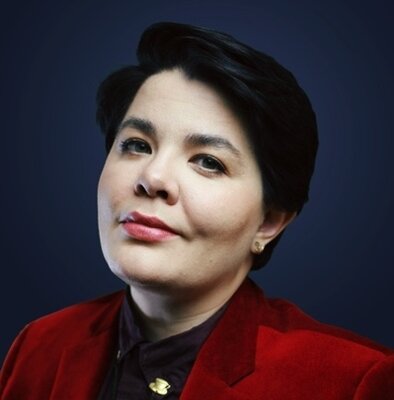Meet Our Fall 2021 Soloists
/On November 21, 2021, at 3 PM ET, St. George’s Choral Society will present our fall concert in person at St. George’s Church, 7 Rutherford Place, New York, NY and via livestream. In-person and livestream tickets are available for purchase online for $30.
The concert will feature four talented soloists:
GRAMMY Award-winning soprano Sarah Brailey enjoys a versatile career that defies categorization. Praised by The New York Times for her “radiant, liquid tone,” and by Opera UK for “a sound of remarkable purity,” she is a prolific vocalist, cellist, recording artist, and educator. Sarah’s numerous career highlights include performing with Kanye West and alternative-classical vocal band Roomful of Teeth at the Hollywood Bowl, serenading the Mona Lisa with John Zorn’s Madrigals at the Louvre in Paris, and performing the role of The Soul in the world premiere recording of Dame Ethel Smyth’s The Prison, for which she received the 2020 GRAMMY Award for Best Classical Solo Vocal Album. Other notable recent and upcoming projects include Barber’s Knoxville: Summer of 1915 with the Colorado Symphony; Julia Wolfe’s Her Story with the Lorelei Ensemble and the Boston, Chicago, Nashville, National, and San Francisco Symphony Orchestras; and John Zorn works with Barbara Hannigan at the Elbphilharmonie. Sarah is a member of Beyond Artists, a coalition of artists that donates a percentage of their concert fees to organizations they care about. Through Beyond Artists, she supports NRDC, Friends of the Boundary Waters Wilderness, and the Animal Welfare Institute. Sarah is a co-founder of Just Bach, a monthly concert series in Madison, Wisconsin, the Artistic Director of the Handel Aria Competition, and the Director of Vocal Studies at the University of Chicago. Learn more at www.sarahbrailey.com.
Heather Petrie is “a true contralto, with a big, deep, resonant projection that can fill a hall” (New London Day) and is thrilled to be singing with the St. George's Choral Society again this season. In 2019 Heather was the second-prize winner in the Lyndon Woodside Oratorio Competition, and made her Carnegie Hall solo debut that winter with the Oratorio Society of New York. As a soloist she has appeared with the American Symphony Orchestra, Voices of Ascension, Sacred Music in a Sacred Space, and the New Orchestra of Washington. She performs frequently with the NY Philharmonic, Musica Sacra, the Choir of St. Ignatius Loyola, Musica Viva NYC, and the Cathedral Choir of Saint John the Divine. In addition to numerous operatic roles, she has been a member of the opera chorus at both Bard Summerscape and the Princeton Festival, and is currently a member of the Metropolitan Opera Extra Chorus. She holds degrees from Bard College and SUNY Purchase Conservatory. More information can be found at www.heatherpetriecontralto.com.
Praised for his “infectious energy” (Schmopera) and "clear and robust" tenor (Opera News), Michael Kuhn is a versatile singer/actor whose career has spanned across opera, musical theater, concert, and recital repertoire. Recent highlights include Pedrillo in Die Entführung ausdem Serail with Opera Omaha, and Romano in the world premiere of Stonewall with New York City Opera at Jazz at Lincoln Center. An active performer in NYC, Michael has appeared at Carnegie Hall as the tenor soloist in Haydn’s Mariazellermesse, in two off-broadway runs of ¡Figaro 90210! at the Duke on 42nd Street, and was recently featured with the Kaufman Center in their Musical Storefronts series. In the US, Michael has performed with Opera Theatre of St. Louis, Central City Opera, Florida Grand Opera, Virginia Opera, The Princeton Festival, Syracuse Opera, On Site Opera, Opera in the Heights, and more. He has also made several appearances in France as a solo artist with the Festival Lyrique-en-mer. In concert repertoire, Michael has appeared as a soloist with the Omaha Symphony, Carolina Philharmonic, Cape Symphony, Atlantic Symphony Orchestra, the New York Choral Society, among others. A passionate recitalist, Michael recently debuted his self-directed and produced project in collaboration with the Massachusetts Museum of Contemporary Art (MASS MoCA) titled Nachtund Träume, a staged recital of German lieder programmed to represent a journey through a night of vivid dreaming. Next year, Michael returns to Opera Omaha as Tobias in Sweeney Todd, and reappears with On Site Opera in NYC as Gherardo in Gianni Schicchi. www.michaelkuhntenor.com
Praised by The New York Times as having a “beautiful sound,” Filipino-American bass-baritone Enrico Lagasca performs oratorio, opera, chamber music, and recitals with repertoire from early to contemporary music both as soloist and chorister across the United States and internationally. In New York, Enrico regularly performs as soloist and chorister with the Choir of Trinity Wall Street, Choir of St. Ignatius Loyola, Bach Choir of Holy Trinity Lutheran Church, St. Thomas Choir of Men and Boys, Musica Sacra, Cathedral Choir of St. John the Divine, Bard Festival Chorus, New York Choral Artists, TENET Vocal Artists, Clarion Music Society, and The Metropolitan Opera Chorus. Across America, Enrico performs with the Santa Fe Desert Chorale in New Mexico, Conspirare and Ensemble VIII in Austin, Texas, Skylark Vocal Ensemble and Kaleidoscope Vocal Ensemble in Massachusetts, Bach Collegium San Diego in California, Spire Vocal Ensemble in Kansas City, Missouri, The Thirteen in Washington D.C., and Seraphic Fire in Miami, Florida. In 2013, he was a finalist in the Das Lied International Song Competition in Berlin, Germany and in 2015 in the 24th International Vocal Arts Competition Le Centre Lyrique in Clermont-Ferrand, France. In 2019, he was selected to be a participant in the inaugural of Renee Fleming's Song Studio at Carnegie Hall. www.enricolagasca.com


















